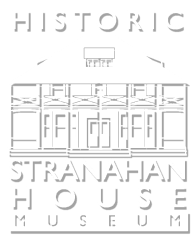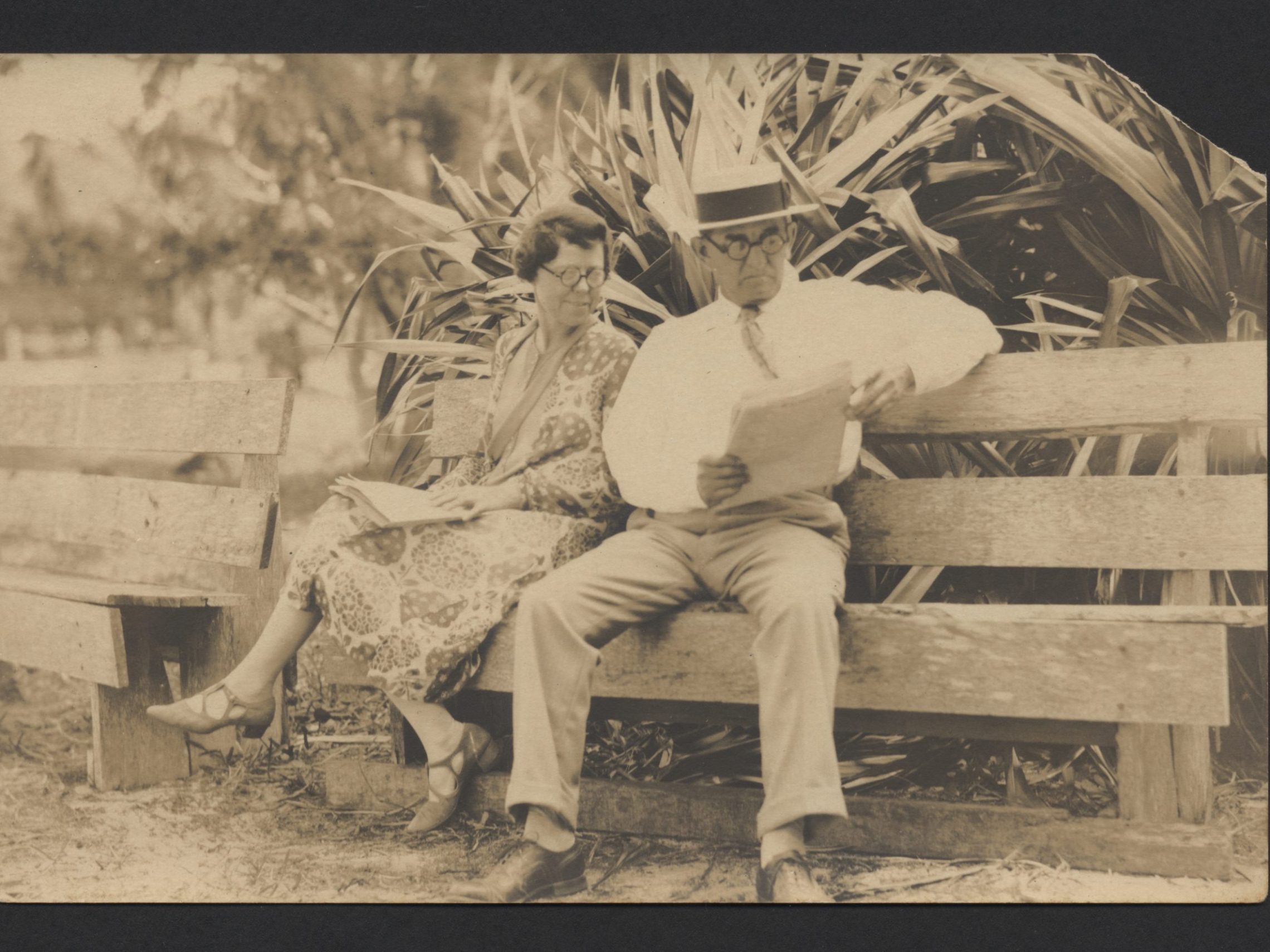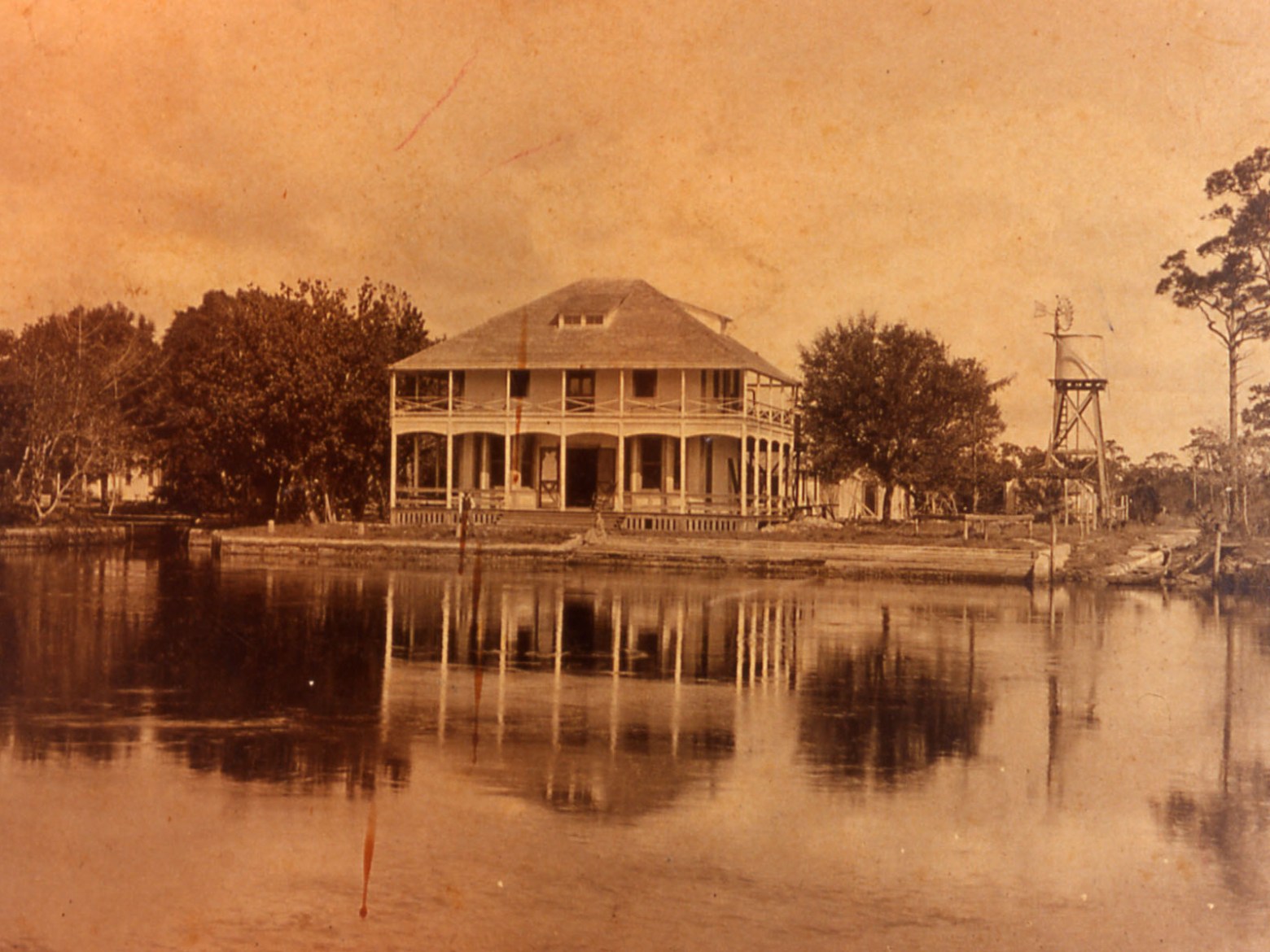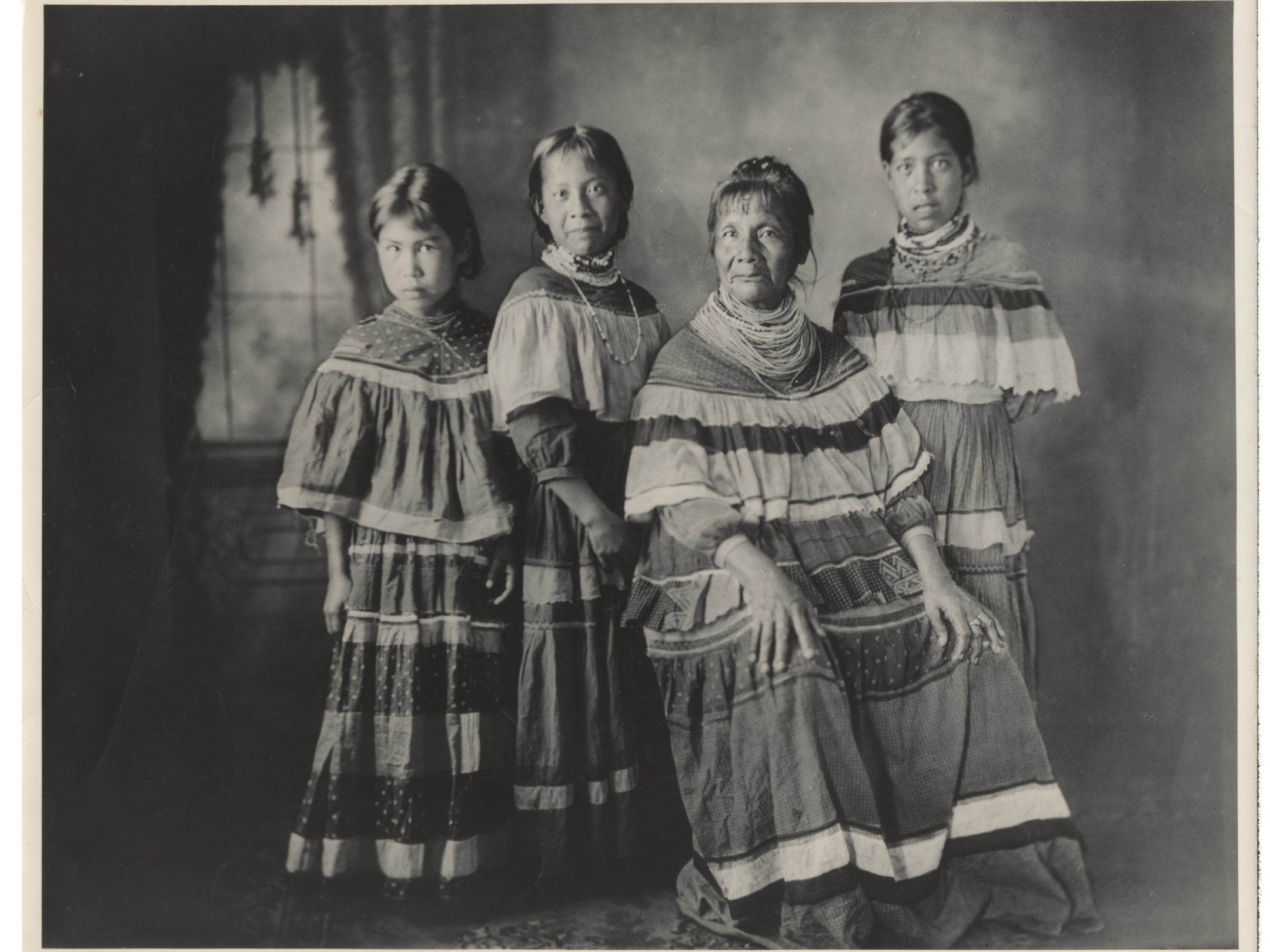Ohio native Frank Stranahan came to the area now known as Fort Lauderdale in January 1893 at the age of 27, hired on to manage his cousin’s camp and ferry at Tarpon Bend on the New River. He quickly established a thriving trading business with the Seminole Indians, gaining a reputation among them as a fair businessman. Arriving by dugout canoes, large groups of Seminole families would camp at the post for days at a time.
In 1894, Frank acquired ten acres for his own commercial interests and moved the trading post farther west along the river. This property became the focal point of the tiny New River settlement, of which Stranahan was now its postmaster. By 1899, the community had grown large enough to qualify for a teacher from the county board of education. Eighteen-year-old Ivy Julia Cromartie of Lemon City, what is now North Miami, was hired at $48 a month for the job. Community members built the one-room schoolhouse for Ivy and her nine students.
Frank and Ivy came to know each other during the five months Ivy lived and taught at the settlement. They married on August 16, 1900, at her family home, and as was not uncommon for married women at the time, Ivy gave up her paid position. She did not, however, give up her teaching aspirations. Instead, she turned her attention to the Seminole children, offering informal lessons at the trading post that respected the tribe’s traditions. Her approach quelled skeptical tribal elders’ fears and formed the basis for her life-long friendship with the Seminole people.
Frank built the present-day Stranahan House in 1901; the lower floor served as a trading post and the upper floor as a community hall. By 1906, Frank’s business had expanded to include a general store and bank and he built a new building closer to the railroad, which had arrived in 1896. The old trading post was renovated as a residence for the Stranahans. The house went through a second major renovation between 1913 and 1915, when an interior staircase, electric wiring, and plumbing were installed. As Frank’s businesses grew, so did the settlement.
Named Fort Lauderdale after the army forts of the Second Seminole War the area was incorporated in 1911. Frank, by now a major landowner, donated property for many public projects and both he and Ivy took on leadership roles in the social and civic life of their developing city. In 1926, Florida’s land boom collapsed. Frank suffered extreme economic reverses that were worsened by two devastating hurricanes. Adding to Frank’s distress was the knowledge that friends who had invested with him were financially ruined as well. On May 22, 1929, deeply depressed and in ill health, Frank committed suicide, drowning in the New River in front of his home.
Ivy carried on, making ends meet by renting out rooms of her home and eventually leasing the lower floor to a series of restaurants. She gradually returned to her civic activism.
Among her many accomplishments, she became a long-term member of the city’s planning and zoning committee, successfully lobbied for the Homestead Exemption law, established the Friends of the Seminoles, and founded Broward County chapters of the Red Cross and Campfire Girls. Ivy remained in her home until her death on August 30, 1971, at the age of 90.
The house was left to the Seventh Day Adventist Church, of which Ivy had been a member since 1915. It was purchased by the Fort Lauderdale Historical Society in 1975, and in partnership with the Fort Lauderdale Board of Realtors, a project to restore the house to its 1915 configuration was begun in 1980.
In 1981, Stranahan House, Inc. became a separate non-profit entity. Construction was completed in 1984, and the house opened to the public as a historic house museum later that year. Supported in large part by the generosity of the community that Frank and Ivy Stranahan helped to found, the Historic Stranahan House Museum is host to 10,000 visitors each year, including thousands of Broward County school students.



